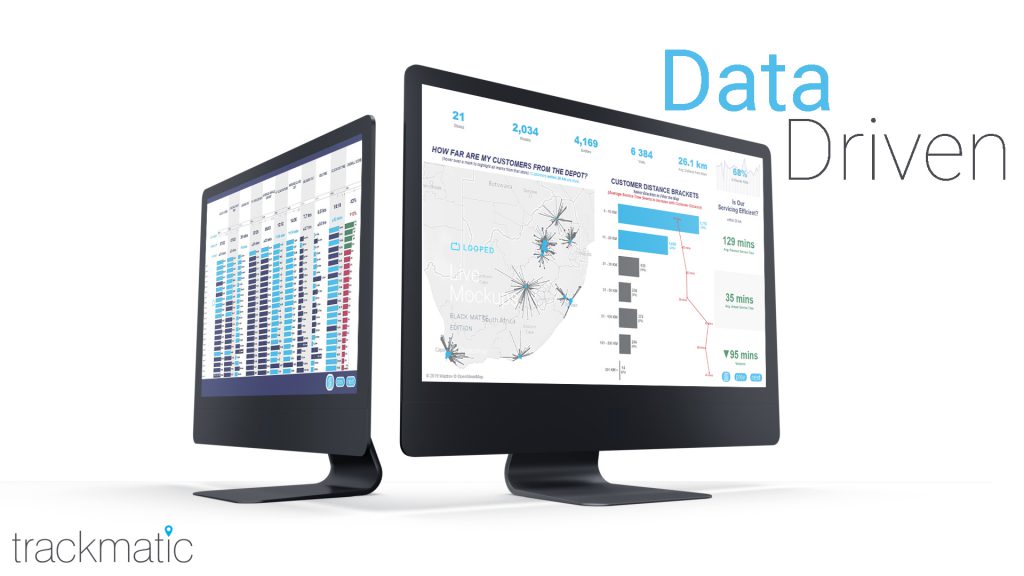Trackmatic is reshaping the future of logistics with pioneering BI models designed to shed light on the dark corners of the supply chain. Its CEO, David Slotow, says that the real value of data doesn’t lie in its volume, but in the threads that are pulled to untangle potential.
Companies are disappointed by the lack of clarity offered by business intelligence (BI) solutions and the lack of engagement with analytics tools from internal and external stakeholders. Many aren’t deriving the value or return on investment.
The truth is that to truly engage with data and pull out the golden threads that allow it to fully deliver on its capabilities, the organisation must use the right tools and ask the right questions.
Transcendent BI is defined by its ability to provide real-time, empirical data in a contextualised way aligned with real-world business requirements across all levels of the organisation. It is equally defined by how it is trusted, implemented and integrated into the business and embedded within a culture that is data literate.
Data is still the black gold of the Fourth Industrial Revolution (4IR) and it is still capable of driving the potential of business beyond what can be seen today and into new markets and innovation.
To achieve this potential, there are many challenges that the organisation must overcome. The first is internal resistance. Many individuals are resistant to the analytics tools and platforms that claim to have a deeper view of the data than they do.
Users want control over their data, they want to see the numbers and manually interpret the insights, so they understand what the data is telling them, but this is time consuming and prone to human error and delay.
It is further complicated by the fact that many people are not data literate and feel that using BI platforms will force them to scale immeasurable learning curves. What’s needed is a solution that thinks for the user and directs their attention in the right areas.
Access to data is easy. Access to real insight is more challenging. Users need to be able to ask powerful questions about trends and patterns not obvious to the business.
The organisation has to break the perception that data is overwhelming, untrustworthy, hard to interpret and daunting. There are multiple data interpretation platforms today that enable individuals at all levels to understand storytelling.

Building a culture of data literacy has never been easier and there is an opportunity to collaborate around a common point of reference and to set collective business goals and performance metrics across the business.
Transcendent UI is creating an opportunity for organisations to become more proactive in their decision-making and more focused on their improvement initiatives.
Creating a data literate organisation can shift the way people work together, collaborate and co-create business solutions to address inefficiencies and achieve greater levels of success. To unlock this trapped potential an organisation has to find the right BI tool that allows for the business to get simplicity from complexity.
BI systems that provide users with visualisation tools that can represent the data in ways that everybody understands, have significantly better results. It allows users to explore innovative ways of interpreting and sourcing the data.
If every person in the business can look at the same piece of data and understand what it means, then it is capable of achieving its purpose. It will break down the intellectual barriers in departments and the silos within which people operate to provide a macro view of the organisation. In this, the business can improve skill sets, enhance performance, and establish a robust culture of data resilience and innovation.
Data can be the new gold; the business just has to understand the best way to mine it. The new tools and technologies introduced need to recognise the needs of the business and the people that populate it. Not all technology is created equal, the solution must be relevant for the business within its own sector, strategic imperative and focus.
It is time to get out of spreadsheets and into an interactive, visual landscape that supports the organisation’s ability to ask the right questions of the data. You can’t get the answers if you don’t know the questions. The solution has to be capable of centralising the data and visually guiding the analysis in the right direction, in real-time, and defining clear focus areas that will make the most crucial business impact. BI tools should facilitate powerful questioning and equip the user with the ability to seek critical insights.
Within the mesh of technology and the individuals lies the true business story. If your BI is not providing answers capable of transforming your business, then you are not getting a return on investment and might as well go back to spreadsheets
Trackmatic develops its technology solutions across the supply chain with transcendent BI as the ultimate end outcome. They help clients to perfect their business flow by providing all key stakeholders in the value chain with understandable, relevant and actionable insight about their operations – in real-time.
The Trackmatic Insight module empowers clients with the ability to measure the right metrics and deliverables across inbound and outbound logistics to radically improve their business performance. The idea is for clients to rollout Trackmatic’s full enterprise ecosystem across their business so that each touch point feeds back critical information about the business and areas of inefficiency into one centralised executive dashboard that guides business decision making.


